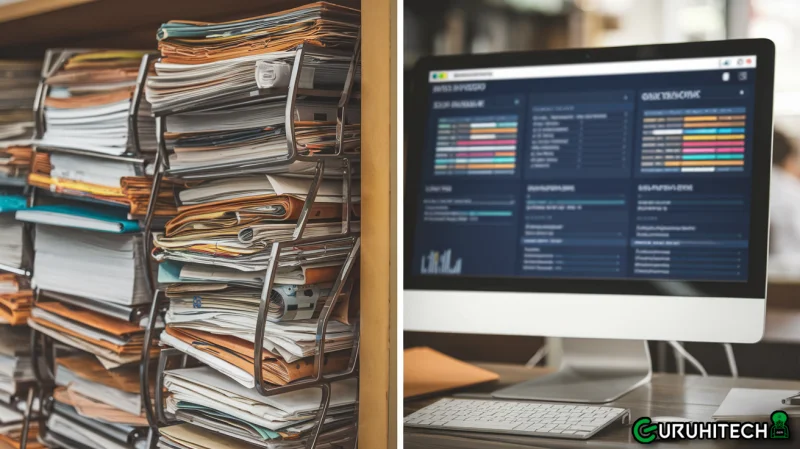Student Information System vs. Traditional Record Keeping: What’s the Difference?

When it comes to managing student data, educational institutions have long relied on traditional record-keeping methods. However, with the advent of technology, a more modern solution has emerged: the student information system. This article will explore the key differences between a student information system and traditional record-keeping methods, focusing on efficiency, accuracy, and convenience. By understanding these differences, schools and colleges can make informed decisions about which method best suits their needs.
The Evolution of Record Keeping in Education
Historically, educational institutions have managed student data through paper-based methods. These traditional record-keeping practices involved maintaining physical files for each student, containing essential information such as grades, attendance, personal details, and disciplinary records. While this system worked for many years, it was not without its drawbacks.
With the introduction of the student information system, schools now have the option to digitize these records. A student information system is a comprehensive digital platform that allows educators and administrators to manage all aspects of student data in a centralized and organized manner. This technological shift has revolutionized how student data is stored, accessed, and utilized.
Efficiency: Time-Saving and Streamlined Processes
One of the most significant differences between a student information system and traditional record-keeping is efficiency. Traditional methods require manual entry and retrieval of data, which is both time-consuming and prone to human error. For instance, searching for a specific student’s academic history or attendance record might involve sifting through numerous files, leading to delays and potential data loss.
In contrast, a student information system streamlines these processes by allowing for quick and easy access to information. With just a few clicks, educators can retrieve comprehensive data on a student’s academic performance, attendance, and behavior. This automation saves valuable time for teachers and administrative staff, enabling them to focus more on instructional and developmental activities rather than administrative tasks. Furthermore, automated features such as grade calculation, attendance tracking, and report generation significantly reduce the administrative burden.
Accuracy: Reducing Errors and Ensuring Data Integrity
Accuracy is another crucial factor where the student information system holds a clear advantage over traditional record-keeping. Manual entry of student data into physical ledgers or spreadsheets is susceptible to mistakes. Even a minor error, such as a typo or incorrect entry, can have significant consequences, potentially impacting a student’s academic standing or leading to miscommunication with parents.

A student information system minimizes these risks by providing built-in checks and balances to ensure data integrity. For example, automatic validation features can detect and prevent duplicate entries or incorrect data formats. Additionally, since the data is centralized and accessible to authorized personnel, there is less likelihood of discrepancies or outdated information. This high level of accuracy ensures that students’ records are consistently reliable and up-to-date.
Convenience: Access and Collaboration Made Easy
Convenience is a notable advantage of a student information system compared to traditional methods. In a traditional setting, accessing student records often requires being physically present in the school’s administrative office, which can be inconvenient for both staff and parents. Moreover, collaborating on student data between different departments, such as academic, administrative, and counseling, can be cumbersome and time-consuming with paper-based records.
A student information system offers a more convenient solution by providing secure, remote access to student data from anywhere at any time. This accessibility is particularly beneficial for parents who can view their child’s progress and communicate with teachers without needing to schedule in-person meetings. Additionally, it fosters better collaboration among school staff, as multiple users can simultaneously access and update records, ensuring seamless communication and coordination across departments.
Data Security: Protecting Sensitive Information
In the digital age, data security is a primary concern, especially when handling sensitive student information. Traditional record-keeping methods are vulnerable to physical threats, such as fire, theft, or unauthorized access. Losing or damaging a physical file can result in permanent loss of critical student data, leading to severe repercussions for both the student and the institution.
A student information system addresses these concerns by providing robust security measures, including encryption, secure user authentication, and regular data backups. These systems are designed to protect sensitive information from unauthorized access, ensuring that only authorized personnel can view or modify student records. Furthermore, digital data storage eliminates the risk of physical damage, making it a safer option for preserving student information in the long term.
Cost-Effectiveness: Analyzing the Financial Aspects
While the initial setup cost for a student information system may be higher than maintaining traditional paper records, it is essential to consider the long-term cost benefits. Traditional record-keeping methods involve recurring expenses for paper, printing, storage space, and filing supplies. Over time, these costs can accumulate, especially in larger institutions with thousands of students.
A student information system, on the other hand, represents a one-time investment in technology and training. Once implemented, the ongoing costs are relatively low, mainly involving software updates and maintenance. Additionally, the time saved through automation and the reduced need for physical storage space can translate into significant financial savings over the years.
Scalability: Adapting to Growing Needs
Another critical difference between a student information system and traditional record-keeping is scalability. As educational institutions grow and the number of students increases, maintaining paper-based records becomes increasingly challenging. The physical space required to store records expands, and the administrative workload grows, potentially leading to inefficiencies and data management issues.
A student information system is highly scalable, allowing schools to easily manage an increasing volume of student data without the need for additional physical space or staff. These systems can accommodate growth by seamlessly integrating new data without compromising performance or efficiency. This scalability makes a student information system a future-proof solution for educational institutions of all sizes.
Environmental Impact: Reducing Paper Waste
In addition to its operational benefits, a student information system also offers an environmental advantage by reducing paper waste. Traditional record-keeping methods rely heavily on paper, contributing to deforestation and environmental degradation. By transitioning to a digital system, schools can significantly reduce their paper consumption and contribute to sustainability efforts.
Conclusion: Choosing the Right Approach for Your Institution
When comparing a student information system with traditional record-keeping methods, it is evident that the former offers numerous advantages in terms of efficiency, accuracy, convenience, data security, cost-effectiveness, scalability, and environmental impact. However, the decision to switch should be based on a thorough assessment of the institution’s specific needs, budget, and readiness to adopt new technology.
For schools looking to modernize their operations and provide a better experience for students, parents, and staff, investing in a student information system is a logical step forward. By embracing digital transformation, educational institutions can ensure they are well-equipped to meet the demands of the 21st century while maintaining a commitment to data integrity and security.
Ti potrebbe interessare:
Segui guruhitech su:
- Google News: bit.ly/gurugooglenews
- Telegram: t.me/guruhitech
- X (Twitter): x.com/guruhitech1
- Bluesky: bsky.app/profile/guruhitech.bsky.social
- GETTR: gettr.com/user/guruhitech
- Rumble: rumble.com/user/guruhitech
- VKontakte: vk.com/guruhitech
- MeWe: mewe.com/i/guruhitech
- Skype: live:.cid.d4cf3836b772da8a
- WhatsApp: bit.ly/whatsappguruhitech
Esprimi il tuo parere!
Ti è stato utile questo articolo? Lascia un commento nell’apposita sezione che trovi più in basso e se ti va, iscriviti alla newsletter.
Per qualsiasi domanda, informazione o assistenza nel mondo della tecnologia, puoi inviare una email all’indirizzo [email protected].
Scopri di più da GuruHiTech
Abbonati per ricevere gli ultimi articoli inviati alla tua e-mail.
